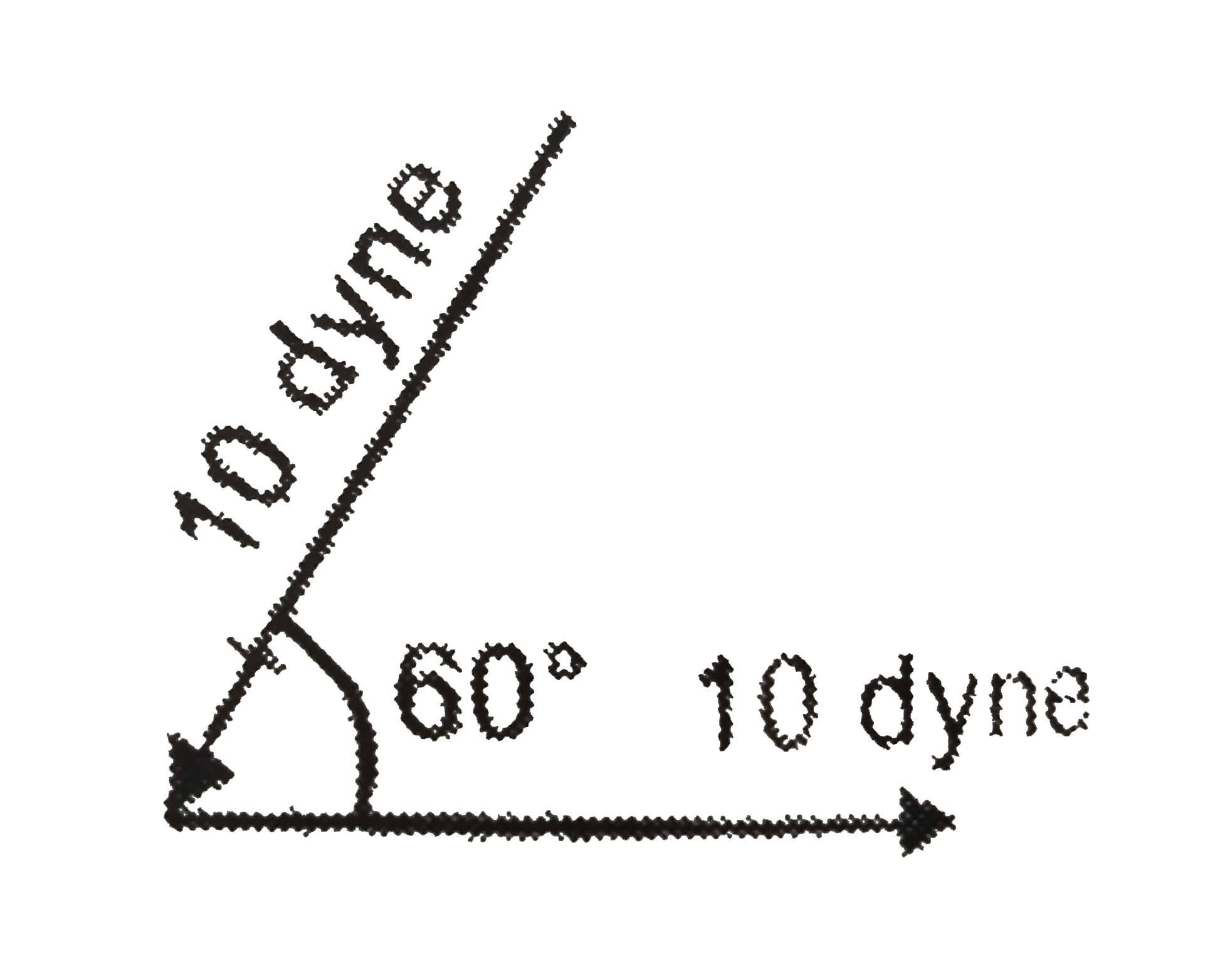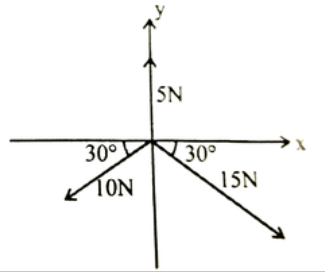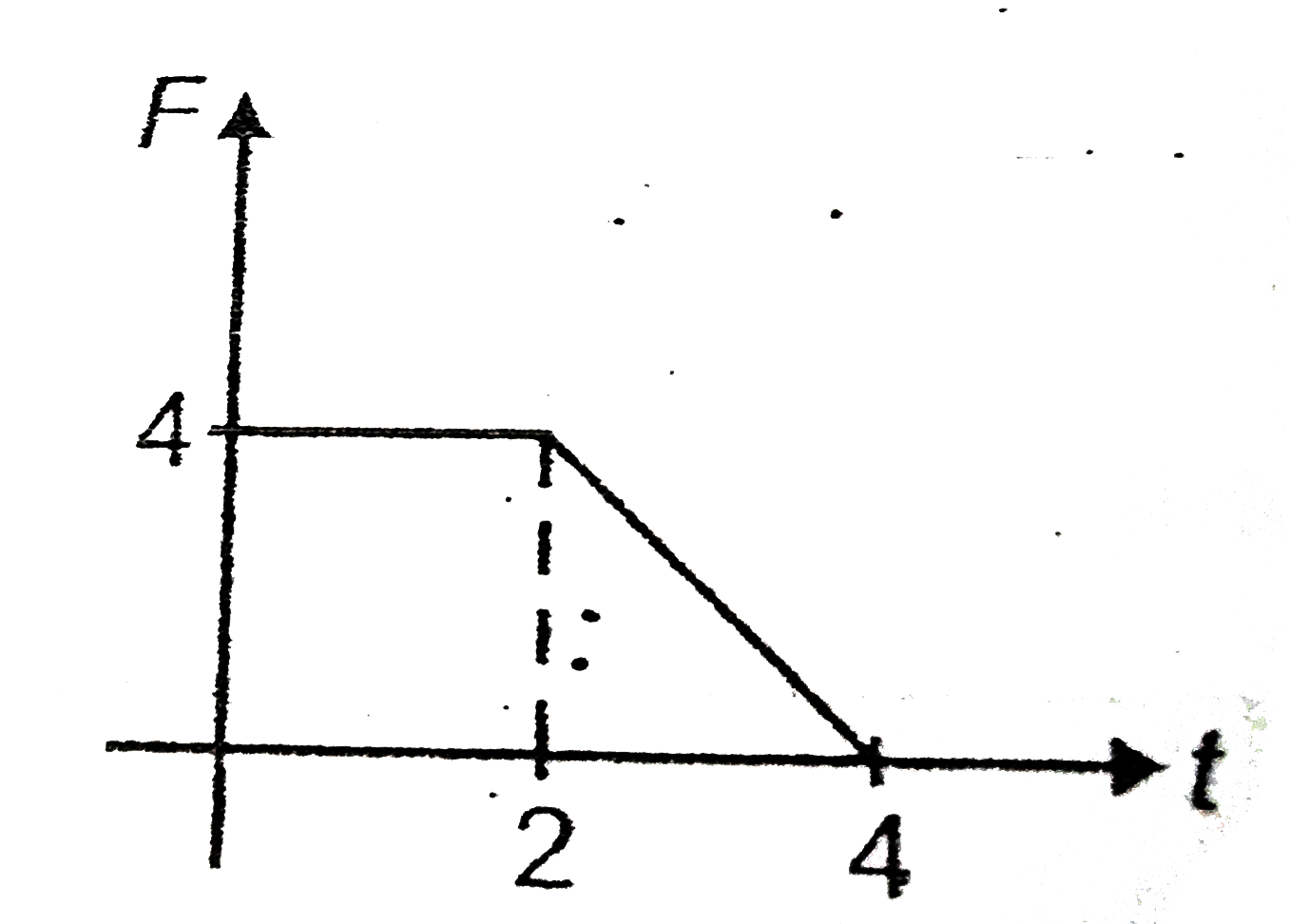Two force each numerically equal to 10 dynes are acting as shown in the figure, then find resultant of these two vectors.
The angle θ between the two vectors is 120∘ and not 60∘.
R=√(10)2+(10)2+2(10)(10)(cos120∘)=√100+100−100=10 dyne

Topper's Solved these Questions
- BASIC MATHEMATICS USED IN PHYSICS &VECTORS Book:ALLENChapter:BASIC MATHEMATICS USED IN PHYSICS &VECTORS Exercise:BEGINNER S BOX 1
Explore 2 Videos
- BASIC MATHEMATICS USED IN PHYSICS &VECTORS Book:ALLENChapter:BASIC MATHEMATICS USED IN PHYSICS &VECTORS Exercise:BEGINNER S BOX 2
Explore 3 Videos
- CENTRE OF MASSBook:ALLENChapter:CENTRE OF MASSExercise:EXERCISE-V B
Explore 19 Videos
Similar Questions
Two forces , each numerically equal to 10 dyne are acting as shown in the following figure Their resultant is :

View SolutionFour forces are acting on a body as shown in figure. The magnitude of resultant of the forces is
View SolutionTwo forces, each equal to F, act as shown in (figure) Their resultant is

View SolutionFind the resultant of the vectors shown in figure.

View SolutionFind the magnitude of the resultant of shown forces :-

View SolutionTwo horizontal forces of magnitudes of 10N and PN act on a particle. The force of magnitude 10N acts due west and the force of magnitude PN acts on a bearing of 30∘ east of north as shown in (figure) The resultant of these two force acts due north. Find the magnitude of the resultant.

View SolutionFind the resultant of three vectors shown in the figure.

View SolutionA force F is acted on a body as shown in the figure. Find the impulse of the force in first four seconds.

View SolutionFind the resultant of the three vectors shown in figure .
 .
.
View SolutionIn the given figure O is the centre of regular pentagon ABCDE. Five forces each of magnitude F0 are acted as shown in figure. The resultant force is

View Solution